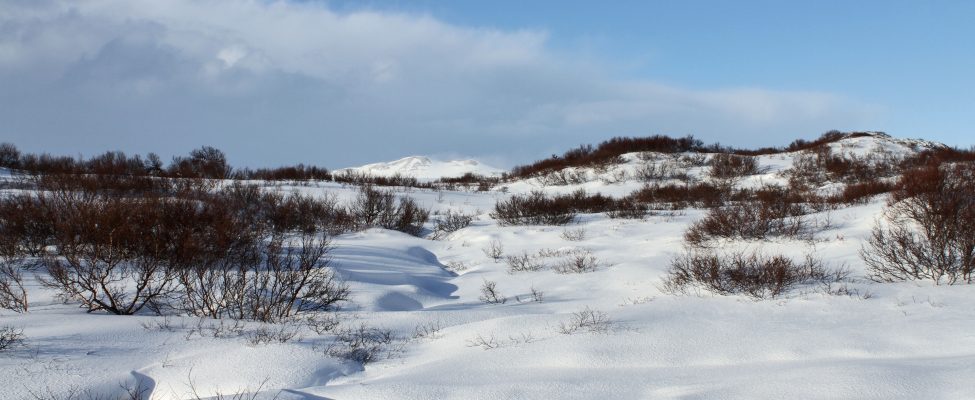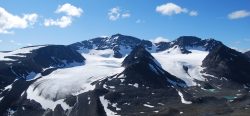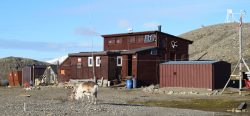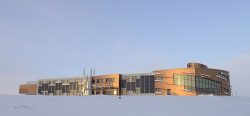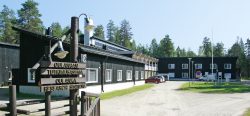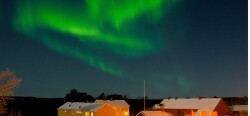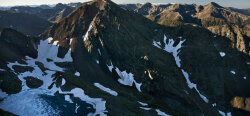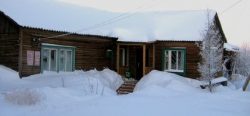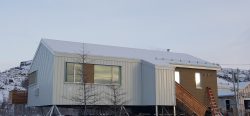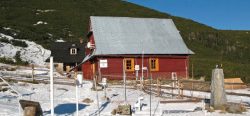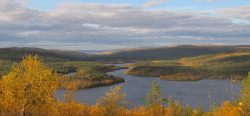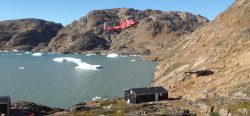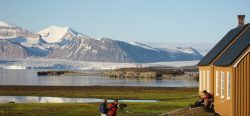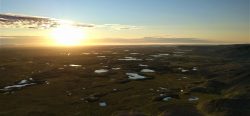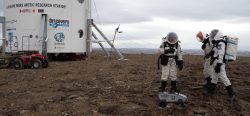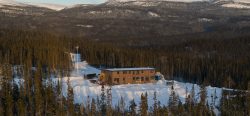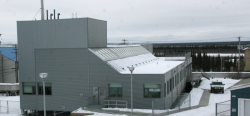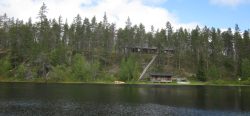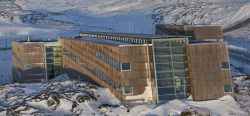Contact Details
c/o Hlynur Óskarsson
Agricultural University of Iceland
Hvanneyri
311 Borgarnes
Iceland
- Phone: +354-433-5000
- Fax: +354-433-5001
STATION NAME AND OWNER
Litla-Skard is not a typical research station but a bio-monitoring site. The site is operated jointly by the Agricultural University of Iceland, the Icelandic Institute of Natural History, the Icelandic Meteorological Office, the Environmental and Food Agency of Iceland, and the Iceland Forest Service.
LOCATION
The Litla-Skard bio-monitoring area is located in the lowlands of western Iceland (64°43’36” N, 21°37’48” W), about 38 km from the shore-line and 100 km north of Reykjavik.
BIODIVERSITY AND NATURAL ENVIRONMENT
The Litla-Skard area exhibits birch shrubs, moss heaths, sedge mires, grassland as well as, sparsely vegetated fell fields. Also a small lake is found within the area. In total, 101 vascular plant species and 19 moss species have been recorded at the site. Birds dominate the vertebrate faunaThe animals that live in a particular region, habitat or time (such as geological period like the jurassic). For plants, we use the term flora, and to collectively refer to all... More with 22 species recorded in the area. Most notable of these are whooper swans (Cygnus cygnus), great northern divers (Gavia immer), and redwings (Turdus iliacus) in summer; snow bunting (Plectrophenax nivalis) in winter and raven (Corvus corax) and ptarmigan (Lagopus muta) year around. Three species of mammals occur at the site: ArcticDefinitions of the Arctic vary according to environmental, geographical, political, cultural and scientific perspectives. Some scientists define the Arctic as areas having a high latitude, long winters, short, cool summers,... More fox (Alopex lagopus), American mink (Mustela vison), and wood mouse (Apodemus sylvaticus). Two species of fish occur in the lake: three-spined stickleback (Gasterosteus aculeatus) and brown trout (Salmo trutta).
HISTORY AND FACILITIES
The Litla-Skard site was designated as a bio-monitoring area in 1996. Litla-Skard is an old, lowland farm. The site is now owned by the Iceland Forest Service. In the past most of the area was used for grazing livestock, mainly sheep. The site has not been grazed since 1985. Afforestation at the site is very limited and disturbance level from human activities is low. The total land area of the Litla-Skard bio-monitoring area is 3 km2 with an elevation of 60-230 m a.s.l. At Litla-Skard there are no research buildings or laboratories, and permanent staff is not located at the site. However, accommodation and laboratory space are available at the campus of the Agricultural University of Iceland in Hvanneyri, 27 km away from the site.
GENERAL RESEARCH AND DATABASES
Litla-Skard is a national site for the International Cooperative Program on Integrated Monitoring of Air Pollution Effects on Ecosystems (ICP IM). The main research emphasis till now has been on chemistryThe study of matter at the atomic and molecular scale.... More of precipitation, climateThe average weather we would expect over a long period of time (seasons, years, decades). Climate varies from place-to-place across the Earth. Climate is determined by long-term (over at least... More, and hydrologyThe study of water in the environment, particularly its amount, movement and quality. It encompasses water in rivers, lakes, glaciers, soil and underground aquifers. The way in which water (liquid and... More. A vegetation inventory has been carried out at the site and the main vegetation and soil types have been mapped. The research is mostly confined to a 560 000 m2 catchment area. Automated weather and hydrological stations were set up at the site in 2000. Existing data bases include climatic records, data on catchment hydrologyThe study of water in the environment, particularly its amount, movement and quality. It encompasses water in rivers, lakes, glaciers, soil and underground aquifers. The way in which water (liquid and... More and water chemistryThe study of matter at the atomic and molecular scale.... More as well as limited biological records.
HUMAN DIMENSION
Before the Litla-Skard area was established as a research and monitoring site in 1996, farmsteads and sheep grazing dominated the land-use. Currently there are no farms in the area and domestic grazing animals have been absent for over 20 years.
ACCESS
Litla-Skard is reached by car throughout the year. It is located by the main central highway, c. 100 km from Reykjavik. Keflavik International Airport is situated about two hours drive from the site.
